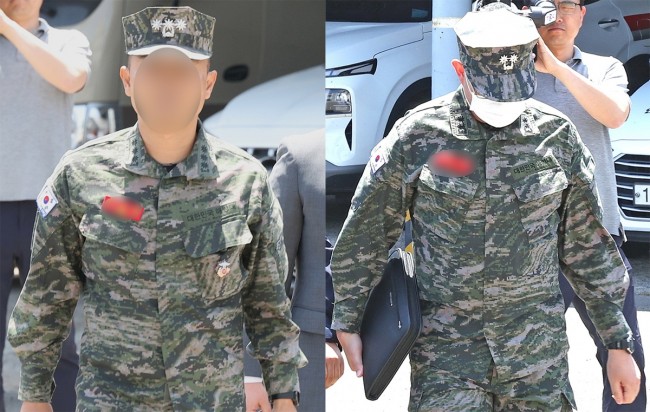| ||
|
얼음과 눈으로 덮인 곳으로는 지구상에 가장 광대한 지역이라는 점과 세계 기후 변화에 매우 취약한 지점이라는 점에서 남극과 북극, 두 지역은 지구 기후 균형의 지극히 중요한 곳으로 간주된다. 또한 남극에서 행해지는 과학적 연구는 세계적 차원의 기후변화에서 인류의 연료소비가 미치는 나쁜 영향에 대한 결정적인 정보를 제공한다. 해마다 점점 더 확실한 과학적 증거들이 제시되면서 현재 인류가 사용하는 화석연료에 기초한 에너지시스템의 패러다임에 근본적인 변화가 필요하다는 것이 자명해 지고 있다.
남극 반도(남극 서대륙의 북쪽에 붙은 반도로 한국의 세종기지 등 여러 과학기지가 들어서 있는 곳이다)는 지난 50년 동안 심각한 온난화 현상을 겪고 있다. 남극 반도의 겨울철 기온이 지구전체의 온난화의 수치보다 15배나 높아지고 있는 것이다. 이는 북극과 더불어 남극 반도가 지구상에서 가장 빠르게 온난화가 진행되는 지역임을 말해준다. 지난 61년간 남극 반도와 연계 섬들 전방에 위치한 244개의 해양 빙하 중 87% 가 후퇴하였고 평균적인 전진과 후진 사이의 명확한 구역이 눈에 띄게 남하하였다. 남극 반도와 남쪽 벨링스하우젠 해(海) 주변의 바다 얼음은 밀도와 지속기간이 모두 감소하였다. 남극 대륙 위의 대류권 (대략 고도 8킬로까지의 가장 낮은 대기권) 역시 지난 30년간 확연하게 온도가 상승하였으며 동시에 성층권 (대류권 상층의 대기권) 의 온도는 내려갔다. 이런 현상은 온실 가스 증가로 예측되었던 결과와 일치한다. _?xml_:namespace prefix = o ns = "urn:schemas-microsoft-com:office:office" />
최근의 연구결과들은 여러 가지 두드러진 방식으로 남극 지역이 예상보다 훨씬 빠르고 확연하게 녹아 내리고 있음을 보여준다. 지난 몇 세기 동안 남극 반도의 온도는 지구상의 여느 지역보다 급속히 상승하였다. 이런 급속한 변화들은 이미 북남극 반도 서해안 지역의 해양생태계에 나쁜 영향을 주고 있다. 이 지역의 변화들은 향후 극지역과 남빙양의 다른 지역에서 일어날 수 있는 미래의 변화를 미리 알려주는 사전경고적 의미를 갖는다. 그러나 실제 이러한 광대한 변화를 관찰하려면 시간이 걸리게 되고 그러한 사실이 확인되면 때가 너무 늦게 된다.
국제 극지의 해(IPY, 2007-2008년)를 맞아 남극과 북극에서는 2년간의 연구 프로그램이 시작되었으며 이 연구는 복잡하게 얽혀있는 극지의 기후와 생태계 사이의 상호작용에 대한 인류의 이해를 한층 진전 시켜줄 것이다.
남극은 지질학상 남극횡단산지 (코츠랜드에 걸쳐 있는 약 3,500km에 이르는 산군(山群))를 기준으로 동남극과 서남극, 두 개의 지역으로 나뉘며 모두 합치면 지구상에서 가장 큰 담수 탱크가 된다. 거대한 빙상의 존재와 지리적 조건으로 남극은 전세계 기후에 강력한 영향을 미치는 막강한 열흡수원(源)이 되었다. 남극의 백색 눈표면과 빙상은 태양 방사선의 90%을 반사한다. 동절기에는 남극 대륙 자체보다 더 크게 빙해가 형성되는 데, 이는 대기권과 대양 사이에 열, 습기 및 가스 교환을 조절하는 역할을 한다. 매해 동절기 빙해가 생성되면서 심층으로 가라앉지 않은 소금층은 "대양 컨베이어"로서 대양의 해수흐름에 핵심적인 공헌을 하고 깊은 심해 생태계를 조절한다. 또한 이 소금층은 세계의 대양 체계에서 북쪽으로 흐르는 차갑고, 조밀하고, 산소가 풍부한 남극 지하수 (Antarctic Bottom Water)를 만든다.
남극대륙에는 완전히 녹을 경우 세계해수면을 60미터 이상 상승시킬 만큼 엄청난 얼음이 존재한다. 인류의 삶을 가장 위협하는 것은 서남극대륙의 얼음이 녹는 상황이다. 서남극의 빙상은 해양에 접해 있으면서 해수면보다 훨씬 아래 해저까지 형성되어 있어 녹을 경우 엄청한 수축잠재력을 갖고 있다. 과학계의 일부 학자들은 최근 확인된 증거를 기초로 이 서남극 빙상 녹는 것을 지구 온난화의 결과로 초래될 대재앙으로 간주한다. 이곳의 해빙은 몇세기 안에 해수면을 5미터나 상승시킬 것이고 상당부분의 세계 저지대의 국가들과 해안도시들을 침수시킨다는 이야기다. 실제 이 지역의 거대한 얼음이 녹아 최근 세계 해수면이 상승되고 있다. 한편 남극산맥에 의해 양분되어 서남극 빙상과 분리되어 있으며 해저에 기반을 두고 있지 않은 동남극 빙상은 조금씩 두꺼워지고 있지만 서남극의 손실을 충당할 만큼은 아니다. 1990년대부터 서남극 빙상에서 흘러나온 남극 얼음천의 수량 방출률이 확연히 증가하였다는 점은 해양 질량수지 역시 빠르게 변할 수 있음을 나타낸다.
남극 대륙의 겨울철 기온은 과거 30년간 2°C 이상 상승되었고 이 현상은 남극바다와 서남극에서 특히 나타나고 있다. 현시점에서 지구전체로 볼 때 가장 넓은 온난화 현상을 보여주는 곳이 남극 상공의 중간 대류권 (지상 5 킬로미터 위쪽의 대기권) 안이다. 특히 남극 반도의 북쪽 지역에서는 과거 50년 동안 급속한 온난화가 진행되었고 이 지역의 빙하들 또한 빠른 속도로 줄어들었다. 과거 61년간의 남극 반도와 연계 섬들에 붙은 244개의 빙붕(해양빙하, 대륙에 붙어 바다위로 발달하는 빙하)의 동향을 조사한 한 연구에 의하면 87%의 빙하가 후퇴하였다. 여름에는 빙붕이 물러나고 겨울에는 자라나는데 이러한 평균적인 전진과 후퇴 사이의 구역이 눈에 띄게 줄어들었다는 이야기다. 남극 반도 빙하들의 완전붕괴는 전세계 해수면을 약 0.5미터 정도 상승시킬 것이다.
남극 대륙의 빙핵(과거의 기후상태를 분석하기 위해 빙하지역의 얼음을 시추한 얼음샘플)은 세계 기후변화 속에서의 인간의 역할을 이해할 수 있는 하나의 핵심적인 열쇠를 제공한다. 남극대륙의 한가운데 위치한 ‘보스토크’와 ‘돔 C(남극대륙에 있는 기상관측기지)’지역에서 시추한 빙핵들은 지금과 같은 대기권 온실가스 고농도가 지난 65만년 동안 일어난 적이 없었다는 것을 보여주고 있고, 지난 2000만년 동안에도 이런 현상은 일어나지 않았을 것이라고 말해준다. 그러나 이 빙핵들은 지난 1세기 동안 지구 대기권 온실가스가 전에 없이 증가하였으며 이는 과거 2만년간 관측된 적이 없는 수치임을 설명해준다. 이 데이터를 기초로 학자들은 지난 42만년간 일어난 세계 기후와 대기권 안의 온실가스 밀도 사이의 밀접한 연관성을 찾아냈으며 이것은 인간의 화석연료 (석유·석탄·천연 가스 같은 연료) 사용이 세계 기후 변화와 연결되어 있음을 보여주는 결정적 증거이다. 다량의 화석연료가 지구 대기권 안의 탄소량에 영향을 주고 이것을 남극 빙핵의 동위원소 분석을 통해 확인한 것이다.
2005년 영국 남극 조사단 (BAS)은 남극 반도 빙해들이 예고된 것보다 더욱 빠른 속도로 용해되고 있다는 사실을 확인하였고, 일부 학자들은 이 남극 빙하들이 이미 지구촌 해수면 상승에 상당부분 영향을 미치고 있다고 결론 지었다. 서남극의 아문센해(海) 구역안에서 빠르게 진행되고 있는 해빙현상은 현재 매해마다 0.2밀리미터 이상 해수면을 상승시키기 충분할 만큼의 얼음을 방출하고 있다. 또한 이 구역은 앞으로 더욱 빠른 가속도로 얼음 방출이 진행될 가능성을 가지고 있다는 점에서 서남극 빙하의 가장 취약한 부분으로 알려져 있다.
최첨단 기후 모델연구들은 지구 온난화로 인해 남극의 해양빙하가 21세기 동안 내내 계속 감소할 것이라고 예측하고 있다. 특히 크릴과 다른 유기체들은 전진과 후퇴를 반복하는 계절별 빙붕 사이클에 의존하여 생식 활동을 한다. 길고 광범위하게 뻗어나간 빙붕 덮개는 겨울 동안 포식자로부터 크릴의 은신처를 제공하고 크릴의 먹이인 얼음 조류(藻類)의 안락한 서식지를 제공한다. 얼음 조류는 겨울 철과 이른 봄까지 어린 크릴에게 긴요한 식량원이다. 2004년에 실시된 한 연구는 1970년대부터 대서양 남서쪽 특정 지역안의 크릴 개체군이 바다 얼음의 감소와 동시에 한 지역에서만 최대 80퍼센트까지 큰 폭으로 사라졌음을 발견하였다. 이 연구는 크릴의 주요 산란장과 종묘장으로 쓰이는 북부의 겨울철 빙하를 포함한 남극 반도와 남부 스코티아 아크(Southern Scotia Arc) 안의 풍부한 겨울 얼음이 대양 전체를 따라 흐르는 크릴 밀도에 영향을 미친다는 것을 발견했다. 남극바다(the Southern Ocean)의 연안해역에서 는 빙하밑에 서식하는 은빛 자치어(the silverfish Pleuragramma antarcticum) 같은 어종들이 줄어들고 있는데, 이러한 어종의 감소 원인이 서식처인 빙하가 빠르게 녹아 내리고 있다.
이런 영향을 직접적으로 받는 또 다른 생물종으로 아델리 펭귄 (Pygoscelis adeliae)을 들 수 있다. 이에 관한 데이비드 에인리 (David Ainley)와 윌리엄 프레저 (William Fraser) 의 공동 연구논문을 인용해 보겠다.
남극대륙에서 가장 북쪽으로 뻗어있는 남극반도의 최북단 지역의 경우 연평균 기온은 지난 30년간 4.5도 나 상승했다. 반면에 지난 일세기동안 지구의 연간 기후는 1.4도 올라갔다. 이 위태로운 지역에 서식하던 모든 아델리 펭귄종은 멸종하였다. 학자들은 그 원인이 겨울빙하가 육지에서 바다로 충분히 자라지 않아 새들의 겨울철 서식지가 형성되지 않기 때문이라고 말한다. 5만 6천 마리의 아델리 펭귄이 사라진 50 평방마일의 구역을 관찰하고 있는 생물학자 윌리암 프레져 (William Fraser)는 “내가 조사하고 있는 이 지역의 아델리 펭귄은 10년 안에 완전히 멸종할 것이다” 라고 말했다. 또한 프레져는 “우리가 30년간 연구했던 펭귄서식지 중 한 지역에서는 지난해에 천 마리의 펭귄 암수쌍이 한마리도 남지않고 폐사되었다.”“이것은 아델리 펭귄이 인류에게 전하는 메시지로서 기후변화가 매우 심각한 문제임을 일깨워 준다.”공동연구자인 에인리는 “인류는 이 펭귄들이 겪은 과정을 통해 심각한 교훈을 얻어야 한다.”고 역설한다.
_?xml_:namespace prefix = st1 ns = "urn:schemas-microsoft-com:office:smarttags" /> James N. Barnes Being the largest areas covered in snow and ice on Earth, the Antarctic and the Arctic are extremely important to the balance of the global climate, and both are remarkably vulnerable to global climate change. Scientific research carried out in the Antarctic provides crucial information about the impacts of human activities in fueling global climate change. Year by year as that scientific evidence becomes more compelling, the need for a paradigm shift away from our present carbon-based energy system becomes manifestly clear.
The Antarctic Peninsula has experienced a major warming over the last 50 years. Winter temperatures have increased at 15 times the rate of global warming, making the Antarctic Peninsula, together with the Arctic, the regions that are warming fastest on Earth. Over the past 61 years, 87% out of the 244 marine glacier fronts on the Antarctic Peninsula and associated islands have retreated, and the clear boundary between mean advance and retreat has migrated progressively southward. Sea ice has decreased in both concentration and duration around the Antarctic Peninsula and in the southern Bellingshausen Sea. The troposphere over the Antarctic continent (the lowest layer of the atmosphere, which extends to approximately 8 km above ground) also has warmed significantly over the past 30 years, accompanied by a concurrent cooling in the stratosphere (the layer of the atmosphere above that of the troposphere). This phenomenon is consistent with what would be expected as a result of increasing greenhouse gases.
The latest evidence shows that parts of the Antarctic are melting and eroding much more quickly than predicted, and in some remarkable ways. Temperatures along the Antarctic Peninsula have risen as fast as anywhere on earth over the past few decades. These rapid changes already are adversely impacting the marine ecosystem along the west coast of the northern Antarctic Peninsula. It is possible that changes here foreshadow changes in the future for other parts of the ocean south of the Polar Front, but the time frame for these wider changes is anything but clear.
It is fitting that the International Polar Year (2007-2008) has commenced a two-year research program in the Antarctic and Arctic. The work accomplished should further our understanding of the complex interactions of polar climate with the ecosystem.
Antarctica is composed of two geologically distinct regions, East Antarctica and West Antarctica, separated by the Transantarctic Mountains. Together the West and East Antarctic ice sheets constitute Earth's largest reservoir of fresh water. The presence of these massive ice sheets and the polar location make Antarctica a powerful heat sink that strongly affects the climate of the whole Earth. The white surface of snow and ice reflect 90% of the sun’s radiation. The annual sea-ice cover around the continent, which in winter reaches an area greater than that of the continent itself, seasonally modulates exchanges of heat, moisture and gases between the atmosphere and ocean. As the sea ice forms each winter, the salt it rejects sinks to the sea floor to form cold, dense, oxygen-rich Antarctic Bottom Water that flows north under the world’s oceans, contributing significantly to the “ocean conveyor” and ventilating deep-sea life.
The Antarctic ice sheets contain sufficient ice to raise world-wide sea level by more than 60 meters if melted completely. The most immediate threat to the inhabited world comes from the melting of the West Antarctic ice sheet (WAIS), which is a marine-based ice sheet that rests on a bed far below sea level and has the potential for rapid shrinkage. Based on the latest evidence, the WAIS is thought by some in the scientific community to be capable of catastrophic disintegration due to global warming, which could raise sea levels by 5 meters in a few centuries. That would inundate large portions of the world’s low-lying countries and coastal cities. It appears to be losing mass now at a rate that contributes a significant portion of current global sea level rise. The East Antarctic ice sheet, on the other hand, which is independent and not seabed grounded, appears to be thickening slightly, but this is not enough to offset losses from West Antarctica. The fact that rates of discharge from some Antarctic ice streams draining WAIS have increased markedly since the 1990s suggests that the mass balance may also be rapidly changing.
Winter temperatures over the Antarctic continent, and principally in West Antarctica, as well as the Southern Ocean, have risen by more than 2°C in the past 30 years. Warming also in the middle troposphere (the layer of the atmosphere at 5 km above ground) over the Antarctic is the largest regional warming on Earth at this level. In particular, the northerly region of the Antarctic Peninsula has experienced rapid warming over the last 50 years and glaciers are shrinking rapidly. In one study on trends in 244 marine glacier fronts on the Antarctic Peninsula and associated islands over the past 61 years, 87% were shown to have retreated, and a clear boundary between mean advance and retreat has migrated progressively southward. The complete disintegration of Antarctic Peninsula glaciers would raise sea level by about 0.5 meter.
Ice cores from the Antarctic continent have provided one of the key pieces of information in understanding humans’ role in global climate change. Ice cores from Vostok and Dome C reveal that today’s concentration of greenhouse gases in the atmosphere has not been exceeded during the past 650,000 years and likely not during the past 20 million years. They show that the rate of increase of greenhouse gases in the atmosphere over the past century is unprecedented, at least during the past 20,000 years. Using these data, researchers have found a close correlation between global temperature and greenhouse gas concentrations in the atmosphere over the past 420,000 years, supporting the link between human use of fossil fuels and global climate change. This is already evident from isotopic measurements showing a significant fossil fuel imprint on carbon in the earth’s atmosphere.
British Antarctic Survey (BAS) 2005 studies of the melting of Antarctic Peninsula glaciers indicate that they are melting much faster than previously predicted. Some researchers have concluded that the melting of these glaciers is already likely contributing a non-negligible part to sea level rise. In the Amundsen Sea sector of West Antarctica, accelerating glacier melt is now discharging enough excess ice to raise sea level more than 0.2 mm per year. This is the sector widely believed to be the most vulnerable portion of the WAIS, with the potential for a further rapid acceleration of ice discharge.
The stability of Antarctic ice shelves in a warming climate has long been discussed, and the recent collapse of a significant part of the Larsen Ice Shelf off the northern Antarctic Peninsula has led to a refocus on the implications of ice shelf decay for the stability of Antarctica's grounded ice. Records from six marine sediment cores in the vicinity of the Larsen Ice Shelf demonstrate that the recent collapse of the Larsen B Ice Shelf is unprecedented during the Holocene - since the end of the last ice age more than 12,000 years ago. This research implies that the Larsen B Ice Shelf has been thinning throughout the Holocene, and that the recent prolonged period of warming in the Antarctic Peninsula region, in combination with the long-term thinning, has led to its collapse.
State-of-the-art climate models project further decline in Antarctic sea ice through the 21st century as a result of global warming. Krill and other organisms depend upon a reliable seasonal pack ice cycle of advance and retreat to reproduce. Long and extended pack ice coverage during winter months provides refuge for krill against predation and a favorable habitat for the ice-algae upon which krill forage. Ice-algae are a critical food source for juvenile krill during the winter and early spring. A study conducted in 2004 found that, coincident with a decline in sea ice, krill populations in certain areas of the South West Atlantic have declined significantly since the 1970s (up to 80% in one region). It was also found that sufficient winter ice in the Antarctic Peninsula and Southern Scotia Arc, which are major krill spawning and nursery areas, affects krill density across the whole ocean basin, including areas north of the Seasonal Ice Zone. The loss of sea ice is likely behind the decline as well as declines in pack-ice dwelling fish species, such as the silverfish Pleuragramma antarcticum, another critical species in neritic areas of the Southern Ocean. One species to feel the effects directly is the Adélie penguin, Pygoscelis adeliae. Quoting a recent article featuring the work of David Ainley and William Fraser:
Along the tip of the Antarctic Peninsula, which reaches farther north than anywhere else on the continent, average annual temperatures have risen 4.5 degrees in just the last 30 years. By comparison, the Earth’s annual temperature has increased by 1.4 degrees in the last century. In this vulnerable area, entire colonies of Adélie penguins have disappeared because, researchers believe, the ice no longer extends far enough into the sea to allow the birds to reach their winter feeding grounds. Biologist William Fraser monitors a 50-square-mile area where 56,000 Adélies have perished. “For our region I work in, the Adélies will be locally extinct within a decade,” Fraser said. “One of the colonies we worked on for 30 years went extinct last year, from 1,000 breeding pairs to zero.”[1] “Climate change is very serious stuff, and that’s the message Adélie penguins have been telling us,” Ainley said. “Humans have to learn lessons from what these penguins are going through.” * 이 글은 그린리포트 2007 11-12월호에 실렸습니다.
[1] Penguins' struggle is a warning to world, William Mullen, Chicago Tribune (MCT), 11 July 2007, p. 2. http://www.popmatters.com/pm/news/article/43748/penguins-struggle-is-a-warning-to-world/ 글 : 짐 반스(James Barnes)(남극보호연합(ASOC)) |


 논산시, 사람꽃복지관 장애인직업 채용 ‧ 체험박람회 개최
논산시, 사람꽃복지관 장애인직업 채용 ‧ 체험박람회 개최
 경찰, 해병대 여단장·대대장 대질…"수중수색 지시여부 확인"
경찰, 해병대 여단장·대대장 대질…"수중수색 지시여부 확인"
 추돌사고로 불타는 승합차
추돌사고로 불타는 승합차
 방명록 작성하는 허은아 신임 당대표
방명록 작성하는 허은아 신임 당대표



 세상에 쓰인다면 자신의 이상을 실천하고 ,,,
세상에 쓰인다면 자신의 이상을 실천하고 ,,,
 상월면 주내 사거리 흉물 방치 폐가 마침내 철거
상월면 주내 사거리 흉물 방치 폐가 마침내 철거
 시민공원 족욕체험장 " 인기몰이" 시민들 반색
시민공원 족욕체험장 " 인기몰이" 시민들 반색
 10월 12일 강경 젓갈축제 3일차 표정 [2]
10월 12일 강경 젓갈축제 3일차 표정 [2]
 여걸[?]의; 등장 ,이인제 도지사 후보 부인 김은숙 씨
여걸[?]의; 등장 ,이인제 도지사 후보 부인 김은숙 씨










